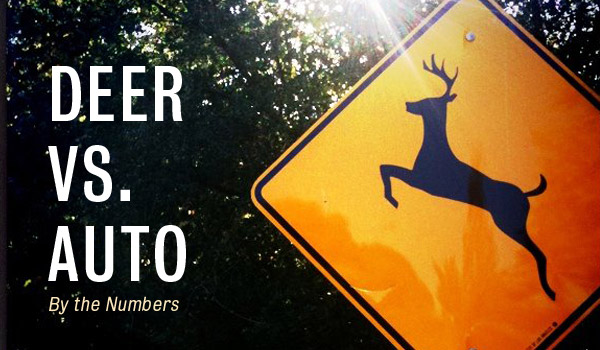Deer Vs. Auto: By the Numbers
Cary, NC — With deer season among us, Wake County drivers can’t afford to be anything other than careful and alert during our evening commutes.
Deer Season
Fall and winter months mark the start of cooler temperatures, darker evenings, and a significant increase in the number of deer on our roadways. The beginning of hunting and mating season causes more deer to travel and cross the streets, especially around dawn and dusk.
This increase in traffic–combined with lowered visibility during sun-up and sun-down–can pose a deadly combination for both animals and drivers.
Between 2011 and 2013, nearly half of the more than 61,000 animal-related crashes took place in October-December. 90% of those involved deer.
The Numbers
Last year, Wake County exceeded all other NC counties in the number of animal-related crashes for the 11th year in a row. This number, 1,135, is largely a result of our county’s high number of drivers and road usage as well as its decreasing amounts of wooded areas.
Gulliford County, the runner-up for animal-related accidents, only logged 620 crashes in 2013–just more than half of Wake County’s.
A N.C. Department of Transportation study shows that over the past three years, animal-related crashes have taken 18 lives, injured more than 3,400 drivers and passengers, and caused more than $149 million in damages.
Safety Precautions
Even a careful driver can be a victim of a deer-related car accident. The NC DOT suggests that drivers become educated on the following guidelines and facts so that, hopefully, we can decrease Wake County’s alarming statistics.
- Slow down in posted deer crossing areas and in heavily wooded areas.
- Always wear your seat belt. Most of the people injured by these crashes were not wearing seat belts.
- Deer are most likely to travel through areas near bridges or overpasses, railroad tracks, streams, or ditches.
- Drive with high beams on when possible, and watch for eyes reflecting in the headlights.
- Deer travel in groups. If you see one, you will likely see another.
- If you see a deer, slow down and blow your horn with one long blast to scare it away.
- Increase the distance between your car and others, especially at night.
- Do not swerve to avoid hitting a deer. This can result in a more serious crash.
- Do not rely on devices such as deer whistles, deer fences, or reflectors to deter deer.
- If your vehicle strikes a deer, do not touch it. A frightened and wounded deer can hurt you or further injure itself. If possible, get your car off the road and call 911.
____________________________________________________________________________________
Story by Jessica Patrick. Photo by Noldentity.




Used the horn, high-beam projection lamps, and doing the speed limit as one ran in front of me across Davis Dr. at Magness, toward Pubix!
‘Twas the night before their grand opening, and the red corvette was northbound…
This is so helpful—I never thought about not touching a deer because of the possibilities of greater injury. Thanks also for the many other alerts.